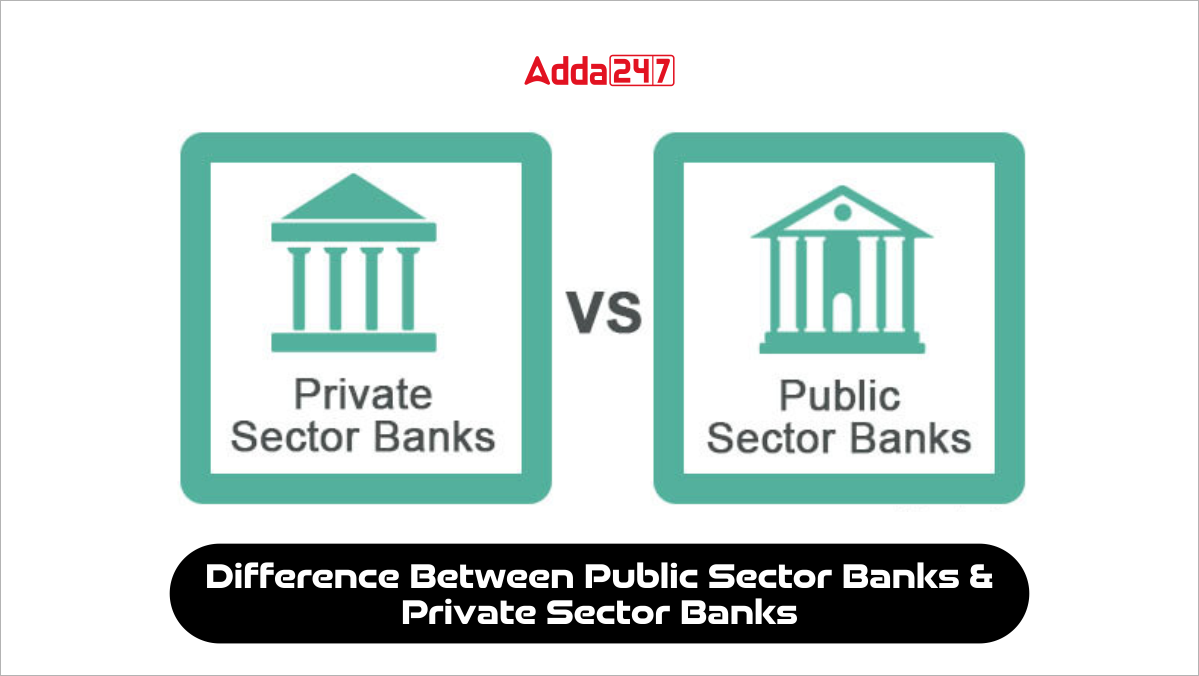The banking sector in India plays an important role in the country’s economic growth and development. Among the various types of banks, Public Sector Banks and Private Sector Banks are two major categories that serve the diverse financial needs of the Indian population. In this article, we will first understand what are private and public sector banks then know the difference between these two.
What are Public Sector Banks?
Public Sector Banks are financial institutions where the majority of shares are owned by the state of central government. These banks operate under the government’s guidelines and policies, making them highly trusted financial institutions in India.
What are Private Sector Banks?
Private Sector Banks are financial institutions where shares are held by private companies or individuals. Despite being privately owned, these banks must adhere to the regulations set by the Central Bank.
Difference Between Private Sector Banks and Public Sector Banks
Let us understand the difference between private sector banks and public sector banks in brief:
| Difference Between Private Sector Banks and Public Sector Banks | |||
| S. No. | Basis of Difference | Private Sector Bank | Public Sector Bank |
| 1. | Meaning | Those banks which are controlled and owned by private companies or individuals are called private sector banks. | Those banks where majority of shares are held by the state or central government are called public sector banks. |
| 2. | Objective | Private sector banks primarily focus on maximizing profits. | Public sector banks prioritize social objectives and public welfare. |
| 3. | Governing Act of Law | Private sector banks are registered under the Indian Companies Act. | Public sector banks are established through acts passed in the parliament. |
| 4. | Controlling Authority | Private sector banks are governed by private companies or individuals. | Public sector banks are controlled by the government. |
| 5. | Shareholding Pattern | In private sector banks, majority of shares are held by the private entities. | In public sector banks, more than 50% of the shares are owned by the government. |
| 6. | Number of Banks | India has 21 private sector banks. | There are 12 public sector banks in India. |
| 7. | Customer Base | Private sector banks have small customer base. | Public sector banks have larger customer base in comparison to private sector banks. |
| 8. | Interest Rates | Private sector banks offer higher interest rates on savings and lower rates on loans. | Public sector banks offer lower interest rates on loans and higher rates on savings and deposits. |
| 9. | Job Security | There is no job security in private sector banks for employees. | Public sector banks provide more job security for employees. |
| 10. | Trustworthiness | Private sector banks may be perceived as less trustworthy. | Public sector banks are generally considered more trustworthy due to government backing. |
| 11. | Market Share | Private sector banks account for 19.7% of the market share. | Public sector banks hold a majority share of 72.9% in Indian banking industry. |
| 12. | Foreign Direct Investment (FDI) | Private sector banks permit 74% FDI (Foreign Direct Investment) | Public sector banks allow up to 20% FDI. |
| 13. | Branch Network | Private sector banks focus on urban and semi-urban areas. | Public sector banks have a larger branch network, including rural areas. |
| 14. | Financial support | Private sector banks rely on their own capital and marketing fundraising. | Public sector banks receive government capital infusion during challenges. |
| 15. | Technology Adoption | Private sector banks lead in technology adoption for customer experience and efficiency. | Public sector banks may face challenges in adopting modern technology. |
Find More General Studies News Here




 World’s 10 Richest Families in 2025: Top...
World’s 10 Richest Families in 2025: Top...
 Which is the Oldest Rainforest on the Ea...
Which is the Oldest Rainforest on the Ea...
 Narpuh Wildlife Sanctuary: Conservation ...
Narpuh Wildlife Sanctuary: Conservation ...







